Thames River
Introduction
Author-Uploaded Audio
Listen to a narration of this entry's description by Public History.
Text-to-speech Audio
Welcome to the Lagers in London, the walking tour that explores the history of the city’s relationship with liquor. You might be wondering, why beer? Well, there is a large market for beer worldwide, and within Canada. For example, in 2016, beer made up about $13.6 billion of Canada’s gross domestic product. Beer brewing in Canada also goes back over 450 years.
So why London? The answer is simple. Location, location, location. But in all seriousness, location and provenance are why beer culture and production has been and continues to be so prevalent in London. This city is home to both commercial and craft breweries, accounting for many of Canada’s beer companies. London is also home to the Labatt brewery, which was one of the “big three” brewers that emerged following World War Two.
The audience and therefore demand for the production of beer comes from a local, national, and global market. From the local side, not only is there a market and audience for it, but there is no tax put on locally brewed beers, in comparison to the out-of-province tax put on beer by the provincial government. The local beer companies in turn create a strong physical presence in the region. In other words, it’s hard to miss London’s connection to beer because of the brewing facilities located in the city.
The following is a list of beer that came out of London, including both new and old companies/breweries:
- The Labatt Brewery
- Anderson Craft Ales
- Forked River Brewing Company
- London Brewing
- Toboggan Brewing Company
- Powerhouse Brewing Company
- Beerlab
- Curley Brewing Company
- Dundas and Sons Brewing Company
- Storm Stayed Brewing Company
- Union Ten Distilling Co.
- Paradigm Spirits Co.
Images
Blackfriars bridge, with Carling Brewery in the background
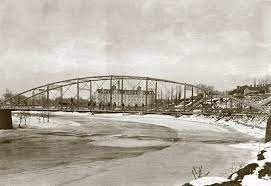
Carling Brewing Amber Ale
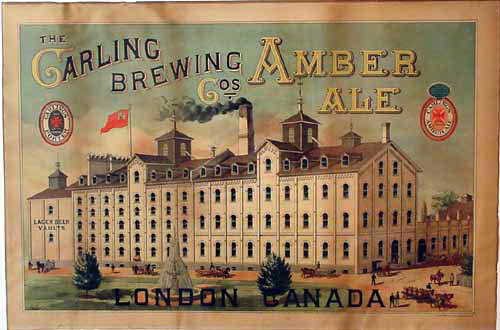
Labatt Breweries
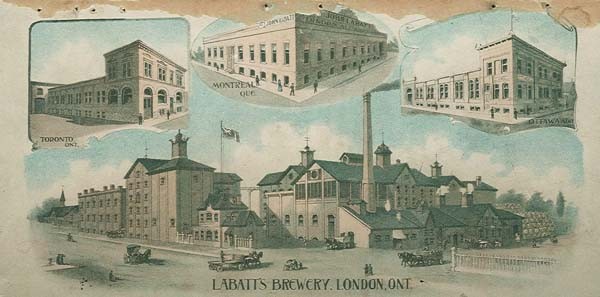
Canadian National Railway Bridge over the Thames River, near the Coves, London, Ontario
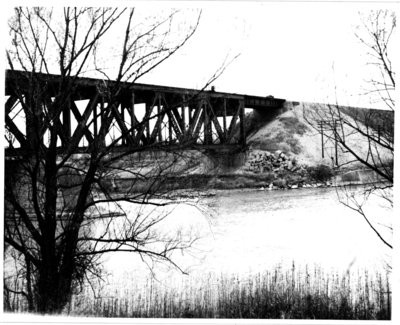
Grand Trunk Railway Depot
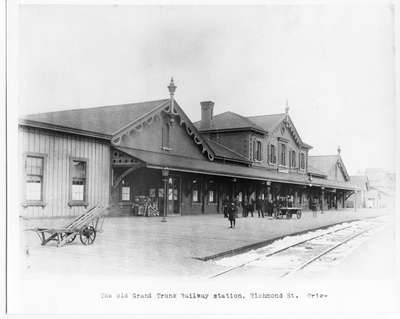
Backstory and Context
Author-Uploaded Audio
Listen to a narration of this entry's description by Public History.
Text-to-speech Audio
(We suggest that you start at the lookout to get the best view of the river.)
For this tour, we are starting here at the River Thames. This river was central to the development of the city of London, which is historically an industrial city responsible for a large portion of Canada’s food production. We are also starting here at the river because you can’t talk about beer without talking about a major waterway. Water is a key ingredient for beer and a vital energy source, and London’s Thames River gave breweries and distilleries easy access to freshwater. London also has a great freshwater environment and local farming community. This results in ideal conditions to grow the barley and grains brewers need. By obtaining these crops locally, breweries did not need to import materials, cutting down on the cost of transportation. This also meant they weren't at the mercy of foreign producers.
Next to the Thames River lies another reason why London became and remains central to the production of beer--the railway. No company can export beer without access to transportation, and the railway proved to be an important opportunity for breweries. The growing rail network allowed brewers to mass produce beer, transport products over long distances, and expand their consumer base. The railway also contributed to London’s industrialization, giving breweries easier access to other materials required to produce beer, like glass bottles.
The refrigerated boxcars also allowed for year-long trade and commerce. Winter was no longer as big of a hurdle and the product could be in transport for longer periods of time without concern about freshness and spoiling. Consumer base not only expanded by the beer that could go to other places in the country but also bringing people to the city and are a way for tourists to enjoy the culture of the city.
Sources
Canadian Craft Beer, Government of Canada. Accessed November 6th 2021. https://www.tradecommissioner.gc.ca/guides/canadian_brewers_guide-guide_biere_canadienne.aspx?lang=eng.
Eberts, Derrek. To Brew or Not to Brew, Manitoba Historical Society. February 1st 2007. Accessed November 6th 2021. http://www.mhs.mb.ca/docs/mb_history/54/beerincanada.shtml.
Macneill, Philip. Bellamy, Matthew . Brewing Industry in Canada, The Canadian Encyclopedia. May 13th 2019. Accessed November 6th 2021. https://www.thecanadianencyclopedia.ca/en/article/brewing-industry.
UWO Archives and Special Collections, O'Connor and Lancaster Collection
From Jay R. Brooks, "Historic Beer Birthday: Thomas Carling." Brookston Beer Bulletin
UWO Archives and Special Collections, The Labatt Brewing Company Collection
Ivey Family London Room, London Public Library, London, Ontario, Canada
Ivey Family London Room, London Public Library, London, Ontario, Canada
